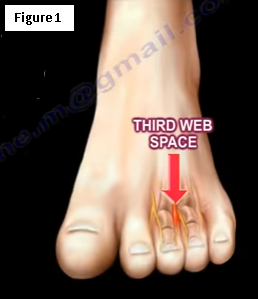
Morton’s neuroma is a chronic irritation of the interdigital nerve, usually the one innervating the third web space (Figure 1). The irritation causes entrapment, compression, and perineural fibrosis rather than a neuroma. The involved nerve is compressed or pinched as it runs between the third and fourth metatarsal heads under the deep transverse metatarsal ligament on the plantar aspect of the foot. Focal swelling of the nerve occurs secondary to the perineural and intraneural fibrosis. It usually affects middle aged females. The patient will complain of pain in the third web space between the third and fourth metatarsals, radiating to the third and fourth toes (Figure 2). Pain is worse with walking, weight-bearing, and with wearing narrow-toed shoes. The pain is better with rest, elevation, removal of the shoes and massaging the foot. The pain does not occur at night. The patient may complain of paresthesia at the bottom of the web space.
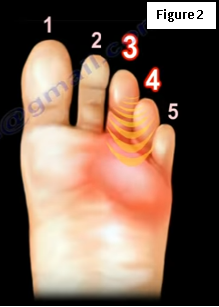
Squeezing the metatarsals together may cause shooting pain that will go into the third and fourth toes. The neuroma may be palpable and the Tinel’s sign may be positive (Figure 3).
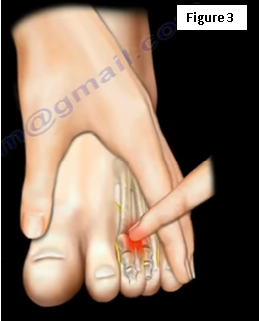
The Mulder’s Sign
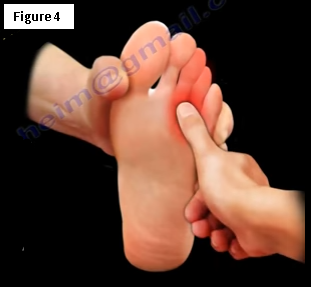
Compression of the forefoot with one hand and simultaneously applying upward pressure on the affected web space with the thumb will produce pain and palpable click; the “click” does not occur in all cases (Figure 4). Ultrasounds may be helpful in the diagnosis. MRI’s are rarely used. The common digital nerve block may be confirmatory for the diagnosis.
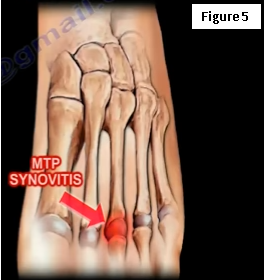
Differential Diagnosis include:
- MTP Synovitis (Figure 5)— The patient will not have relief from the digital nerve block
- Stress Fracture
- Metatarsalgia
- Arthritis
- Lumbar disc herniation— L5 nerve root distribution
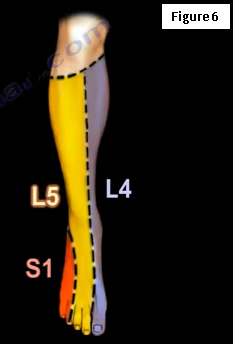
Conservative treatments are preferred, such as switching to wide toe box shoes, taking anti-inflammatory medications, and steroid injections. Surgery is only considered in cases where non-operative treatment fails.
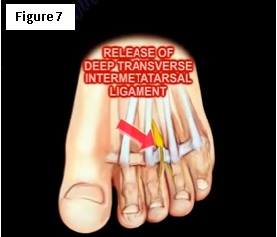
If surgery is necessary, both the dorsal and plantar approach is acceptable, however, the dorsal approach is more popular. During the surgical procedure, the neuroma will be excised with the release of the deep transverse intermetatarsal ligament (Figure 7). The physician will resect the nerve as far proximal as possible to prevent recurrence of the neuroma and the symptoms. Complications of surgery include: a painful plantar scar and stump neuroma when resection of the nerve is not proximal enough.
